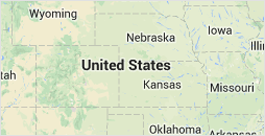Emily Clarke
PHONE NUMBER : -----
Map

6 Different Annotation Types in Computer Vision
Whether you're preparing models manually or using annotation services for computer vision, you can employ many distinct approaches. Annotation isn't a universal thing. Several different types of annotation techniques are available, each one serving a unique purpose. Here's a quick breakdown of the types of annotation you can use to prepare your computer vision models.
Line Annotation
With line annotation, you delineate images to define separate parts of an image. It involves using lines and splines to create defined boundaries.
Line annotation is often the technique of choice for warehouses and autonomous vehicles. It allows the AI system to recognize parts of the image, such as sections of a conveyor belt or the lanes on the road.
Polygon Annotation
Polygonal annotation creates pixel-perfect boundaries around an object. It's more precise than simple bounding boxes, telling models where to look as they identify and localize target objects.
You often see polygon annotation in medical imaging because of its ability to define boundaries on an irregular shape while ignoring irrelevant pixels.
Bounding Boxes
Bounding boxes are similar to polygonal annotation, but they're much simpler. Instead of defining the boundaries, bounding boxes enclose objects in a simple square to help models locate targets.
This annotation type is the most common and can apply to any object.
Landmark Annotation
Also known as dot annotation, landmark annotation uses dots to label objects in an image. Models will look at the dots to distinguish important landmarks from the surroundings.
You can use single dots for large objects, several dots to identify small objects or a series of dots to represent the outline of an object.
Semantic Segmentation
Semantic segmentation separates an image into different regions. Annotation services for computer vision can then assign labels to every pixel. The distinct regions carry unique definitions, allowing models to recognize complex objects within a larger image.
3D Cuboids
Finally, we have 3D cuboids. This form of annotation is powerful and more complex. It's similar to bounding boxes. However, they have the added dimension of depth.
3D cuboids can predict the shape and volume of an object, allowing complex systems to learn more about a target and its surroundings.
Author Resource:-
Emily Clarke writes about tech for automated annotation, AI labeling, data evaluation and more. You can find her thoughts at computer vision platform blog.
